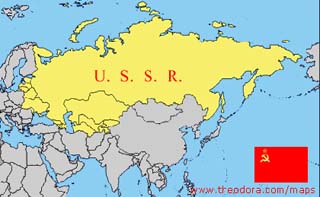
Map of the former Soviet Union. (Map courtesy of http://www.theodora.com/maps used with permission.)
Instructor(s)
Prof. David Woodruff
Prof. Elizabeth A. Wood
MIT Course Number
17.57J / 21H.467J
As Taught In
Spring 2003
Level
Undergraduate
Translated Versions
Course Description
Course Features
Course Highlights
This course features archived syllabi from various semesters.
Course Description
At its greatest extent the former Soviet Union encompassed a geographical area that covered one-sixth of the Earth's landmass. It spanned 11 time zones and contained over 100 distinct nationalities, 22 of which numbered over one million in population. In the 74 years from the October Revolution in 1917 to the fall of Communism in 1991, the Union of Soviet Socialist Republics, its leaders and its people, had to face a number of difficult challenges: the overthrow of the Tsarist autocracy, the establishment of a new state, four years of civil war, a famine, transition to a mixed economy, political strife after Lenin's death, industrialization, collectivization, a second famine, political Show Trials, World War II, post-war reconstruction and repression, the "Thaw" after Stalin's death, Khrushchev's experimentation, and Brezhnev's decline. Each of these challenges engendered new solutions and modifications in what can be loosely called the evolving "Soviet system."


